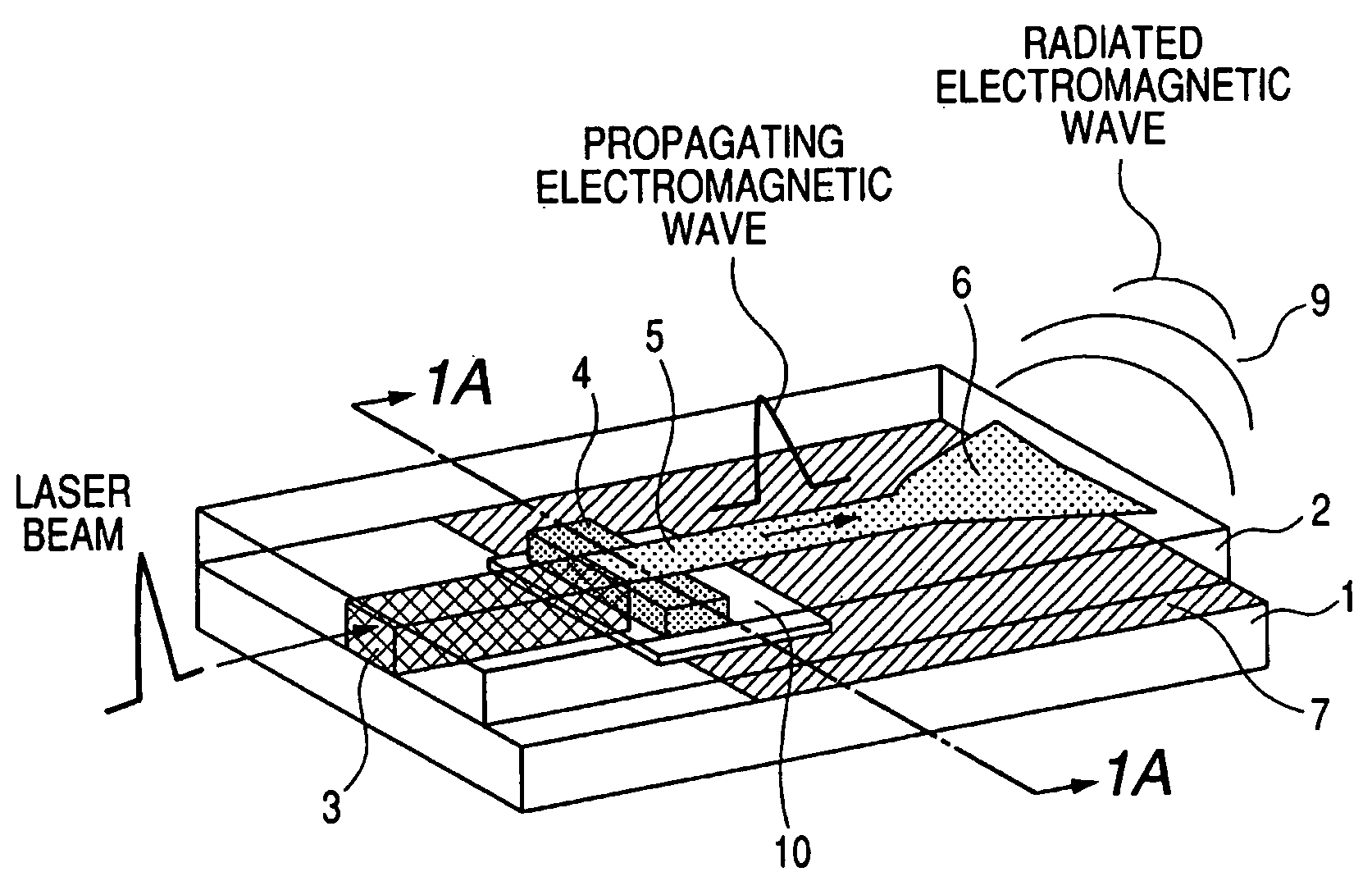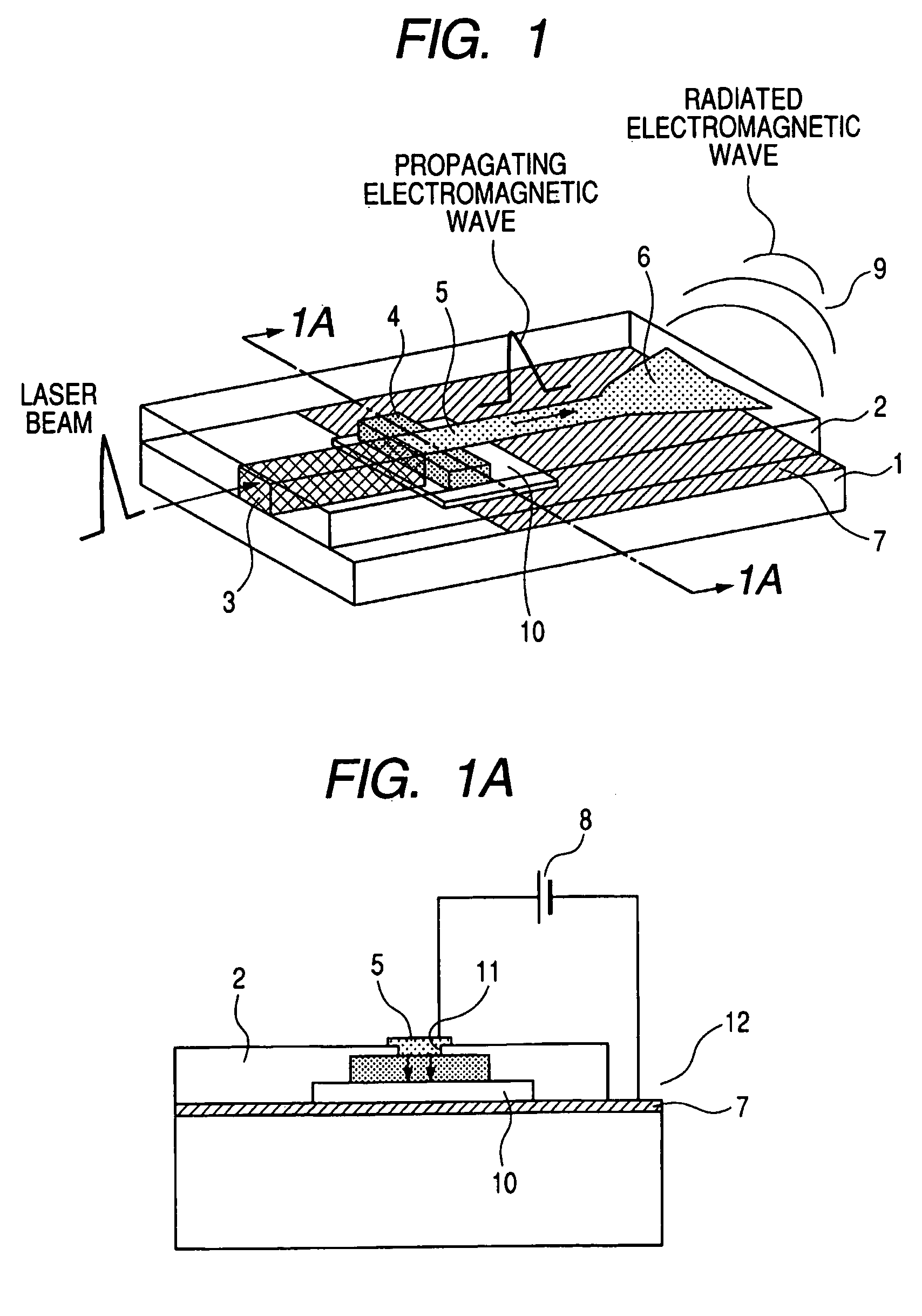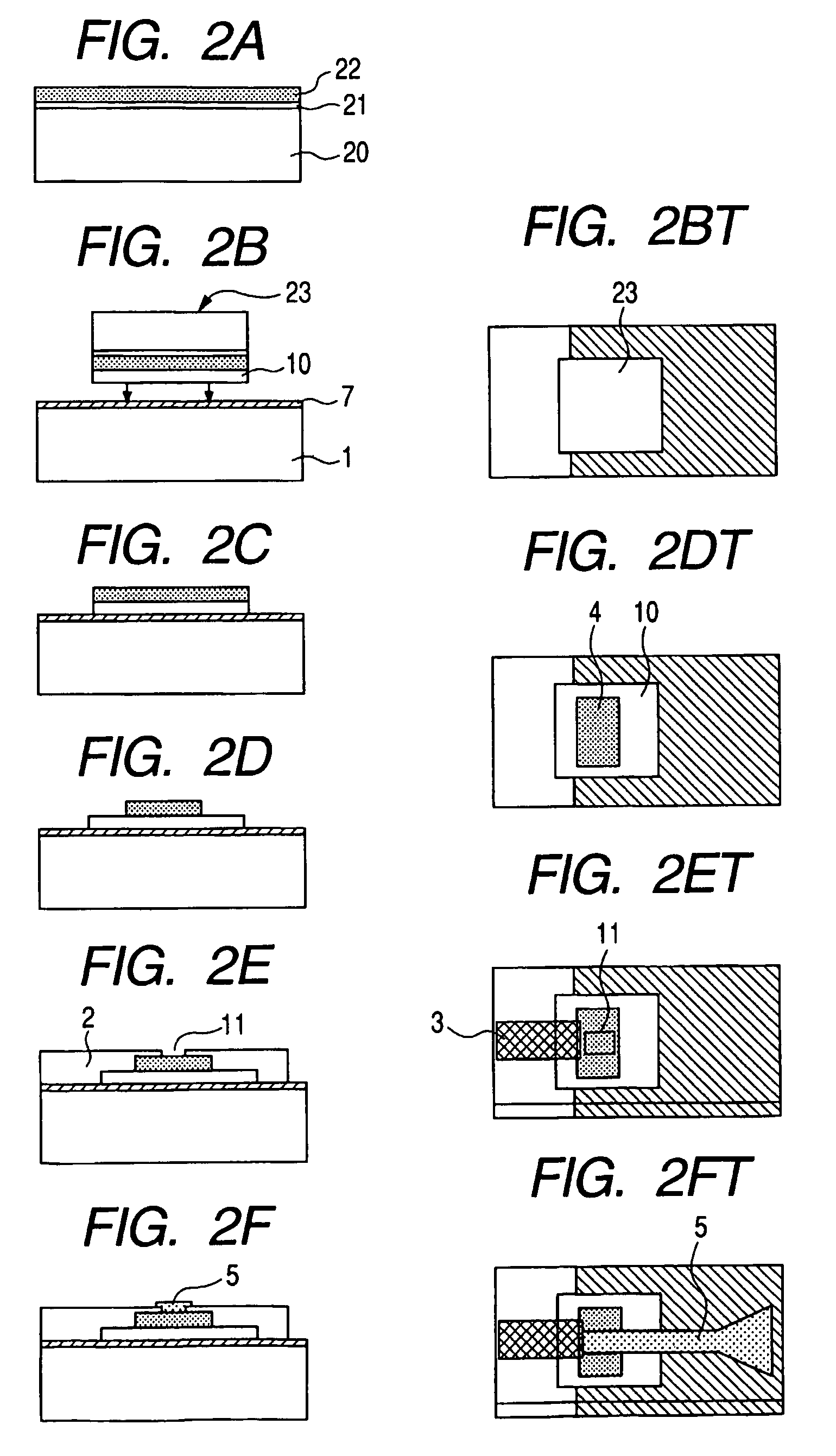Optical semiconductor device in which an electromagnetic wave is generated in a region of an applied electric field
a technology of electromagnetic waves and optical semiconductors, applied in the direction of optical radiation measurement, instruments, nuclear engineering, etc., can solve the problems of inability to apply light laterally, inability to achieve alignment-free, and inability to improve coupling efficiency and maintain stability, etc., to achieve simple structure, improve and stabilize coupling efficiency, and small size
- Summary
- Abstract
- Description
- Claims
- Application Information
AI Technical Summary
Benefits of technology
Problems solved by technology
Method used
Image
Examples
first embodiment
[0029]According to a first embodiment of the present invention, an optical waveguide, a microstrip line, and a photoconductive element for converting light into a terahertz electromagnetic wave are integrated on the same substrate, as shown in FIG. 1.
[0030]A Ti / Au electrode (or an Al electrode) 7 serving as a ground plane is formed in a partial region on an Si substrate 1. A low-temperature (LT)-grown GaAs epitaxial film 4 having a thickness of 2 μm is transferred in the vicinity of the center. An optical waveguide 3 is formed on the left side of the LT-GaAs such that an externally-incoming beam efficiently performs photoirradiation to the side surface of the LT-GaAs film. On the other hand, a microstrip line 5 of Ti / Au is formed on the right side on the top with an insulator 2 interposed such that an electromagnetic wave generated at LT-GaAs can propagate. This line also serves as an upper electrode of LT-GaAs. A patch antenna 6 is formed on the other end portion of the line such t...
second embodiment
[0048]According to a second embodiment of the present invention, a plurality of elements are arrayed on the same semiconductor substrate as shown by an integrated device 40 in FIG. 4. In the manufacturing process shown in the first embodiment, the elements are formed on an Si substrate 41 collectively on a wafer level, so that arrayed elements can be provided freely depending on the arrangement of the element or how the wafer is cut.
[0049]More specifically, two optical waveguides 42a and 42b, photoconductive elements 47a and 47b, microstrip lines 43a and 43b, and print dipole antennas 44a and 44b are arrayed in parallel. Although the array spacing is illustrated as 1 cm herein, the present invention is not limited thereto. In this case, a THz electromagnetic wave includes a component propagating through space as shown by an arrow 46, so that the changing state of the electromagnetic wave reflected on an object 45 can be detected.
third embodiment
[0054]According to a third embodiment of the present invention, as shown in FIG. 5, two photoconductive elements are integrated on the same substrate. This allows a sensor device to function on one substrate for sensing an object placed closely on a high frequency transmission line.
[0055]A photoconductive element 53a is similar to that in the first embodiment in that, with application of a vertical electric field between a line 54 and a lower electrode 52a, a THz electromagnetic wave, which is excited by light propagating through an optical waveguide 51a, propagates through the line 54. In this embodiment, a ground plane is not provided, and a high frequency transmission line is a single line including the signal line 54 embedded in an insulator 55 upward and downward. Electrodes 52a and 52b are isolated, each having a thickness of about 3 μm with Au plating for adjusting the height of the photoconductive element.
[0056]Therefore, the manufacturing process is almost the same as in th...
PUM
 Login to View More
Login to View More Abstract
Description
Claims
Application Information
 Login to View More
Login to View More - R&D
- Intellectual Property
- Life Sciences
- Materials
- Tech Scout
- Unparalleled Data Quality
- Higher Quality Content
- 60% Fewer Hallucinations
Browse by: Latest US Patents, China's latest patents, Technical Efficacy Thesaurus, Application Domain, Technology Topic, Popular Technical Reports.
© 2025 PatSnap. All rights reserved.Legal|Privacy policy|Modern Slavery Act Transparency Statement|Sitemap|About US| Contact US: help@patsnap.com



